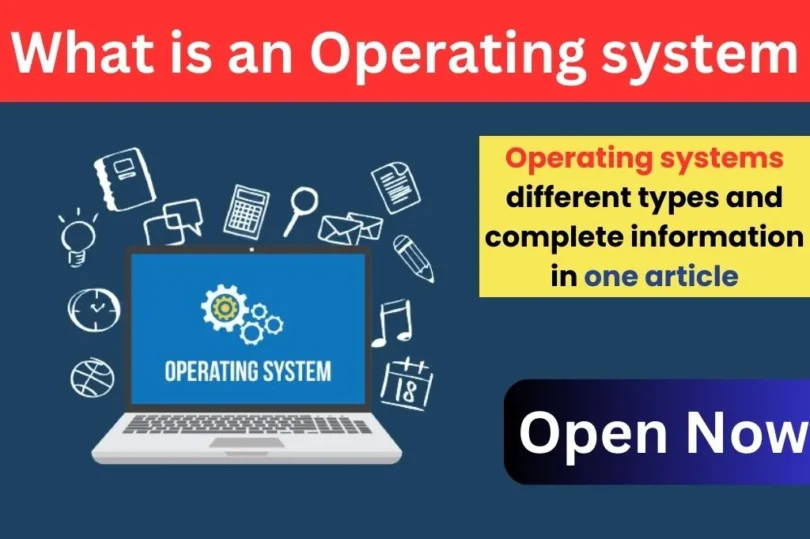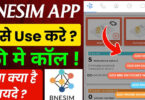An operating system (OS) is a fundamental software component that plays a pivotal role in the operation of modern computers and electronic devices. It serves as a bridge between the hardware of a device and the software applications that run on it, managing and coordinating their interactions to ensure efficient and secure computing.
At its core, an operating system serves four primary functions:
- Hardware Abstraction: The OS abstracts the underlying hardware complexities of a computer or device, providing a uniform interface for software to interact with the hardware. This abstraction simplifies application development since programmers can write software without having to worry about specific hardware details. Instead, they rely on the OS to manage hardware resources.
- Process Management: One of the central roles of an OS is to manage processes, which are individual tasks or programs running on the computer. The OS allocates CPU time, memory, and other resources to these processes, ensuring they can run concurrently and efficiently. It also provides mechanisms for inter-process communication and synchronization.
- Memory Management: Efficient use of a computer’s memory (RAM) is crucial for overall system performance. The OS is responsible for allocating and deallocating memory for processes, ensuring they do not interfere with each other’s data. Memory protection mechanisms help prevent one process from accessing another’s memory, enhancing security and stability.
- Device Management: Computers interact with various hardware devices such as storage drives, keyboards, mice, displays, and network adapters. The OS manages these devices through device drivers, which are software components that facilitate communication between the OS and the hardware. It provides a standard interface for applications to access these devices, making it easier to develop software that works with a wide range of hardware.
In addition to these core functions, modern operating systems offer several other features and services:
- File System Management: The OS provides a file system that organizes and stores data on storage devices like hard drives and SSDs. It allows users and applications to create, read, write, and delete files, providing a hierarchical structure for efficient data organization and retrieval.
- User Interface: Operating systems often include user interfaces (UIs) that allow users to interact with the computer or device. These can be command-line interfaces (CLI), graphical user interfaces (GUI), or a combination of both, depending on the OS.
- Security and Access Control: OSs enforce security policies and access controls to protect data and resources. This includes user authentication, permission management, encryption, and firewall capabilities to safeguard against unauthorized access and malicious software.
- Networking: The OS provides networking support, allowing devices to connect to local networks or the internet. It manages network protocols, such as TCP/IP, and provides services like DHCP and DNS for seamless communication.
- Task Scheduling: To maximize CPU utilization, the OS employs scheduling algorithms to determine which process should run at any given time. It aims to balance resource allocation and ensure fair access to the CPU for all running processes.
- Error Handling and Logging: Operating systems include mechanisms for error detection, handling, and logging. When errors occur, the OS may generate error messages, log them for later analysis, and attempt to recover gracefully when possible.
- System Utilities: OSs often come with a set of built-in utilities for tasks like disk maintenance, system diagnostics, and software updates.
- Virtualization: Some modern OSs support virtualization, allowing multiple virtual machines to run on a single physical host. This enables efficient resource utilization, isolation of workloads, and improved scalability.
Operating systems come in various types, with the most common being:
- Desktop OS: Designed for personal computers and workstations. Examples include Microsoft Windows, macOS, and various Linux distributions like Ubuntu.
- Server OS: Optimized for servers and data centers, providing features like enhanced security, scalability, and server-specific software support. Examples include Windows Server, Linux server distributions, and FreeBSD.
- Mobile OS: Tailored for mobile devices like smartphones and tablets, with a focus on touch interfaces, power efficiency, and mobile-specific applications. Notable examples are Android and iOS.
- Embedded OS: Engineered for embedded systems like smart appliances, IoT devices, and automotive systems, where resource constraints and specialized requirements are common. Examples include Linux-based embedded OSs and real-time operating systems (RTOS).
Operating systems have evolved significantly over the decades, from early batch processing systems to today’s multi-user, multi-tasking, and multi-threaded environments. They continue to evolve to meet the ever-increasing demands of modern computing, incorporating innovations in virtualization, containerization, cloud integration, and security to provide a robust foundation for software development and efficient resource management.
| Join Telegram Group | Click Here |
| Official Website | Click Here |
In conclusion, an operating system is the central software component that acts as an intermediary between hardware and software, providing essential services for process management, memory management, device management, and file system organization. It plays a critical role in ensuring the efficient, secure, and user-friendly operation of computers and electronic devices, with various types tailored to different computing environments.






